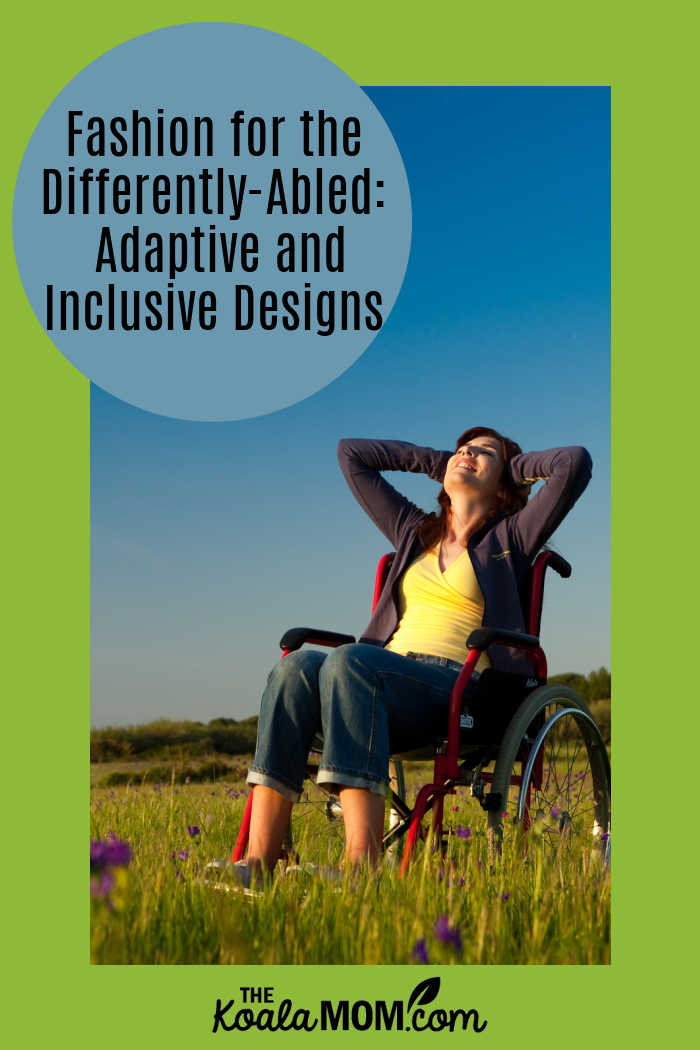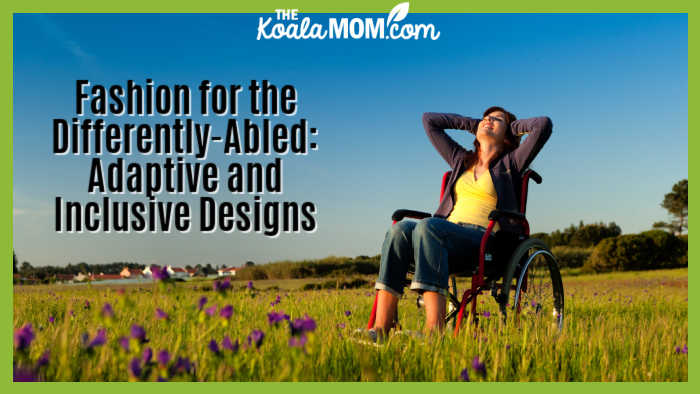Fashion is a powerful form of self-expression, allowing individuals to showcase their unique style and personality. For people with disabilities, finding clothing that is fashionable and functional can be a significant challenge.
The fashion industry has traditionally overlooked the needs of the differently-abled. However, recently, there has been a growing movement towards adaptive and inclusive designs. These designs aim to make fashion accessible to everyone, regardless of their physical abilities.
Differently-abled people can express their fashion sense in various ways, just like anyone else. As Nicole M. Caruso says, “We are worthy of wearing the things that make us feel beautiful. We owe it to ourselves to dress in what fills us with joy, suits our body, and matches our vocation and lifestyle.” The following are some ways of inclusive consideration of people living with disabilities.

Inclusive Fashion Ideas for those with Disabilities
Adaptive Clothing
Many fashion brands and designers now offer adaptive clothing lines specifically designed for people with disabilities. The clothes have features that accommodate different needs, such as wheelchair-friendly cuts, magnetic closures, easy-to-use fasteners, and sensory-friendly materials.
Accessories
Accessories are a great way to showcase personal style. Differently-abled individuals can experiment with different accessories such as scarves, hats, sunglasses, jewelry, bags, watches, or belts to add flair to their outfits. You can choose based on personal taste, interests, or cultural influences. An accessory like aviator glasses, one of the most classic eyewear styles, goes a long way to transform a look and boost confidence.
Color and Patterns
Incorporating vibrant colors and patterns into clothing choices can be an excellent way to express individuality. Experimenting with different color combinations or wearing bold patterns and prints can help create a unique and expressive fashion statement. Don’t be afraid to try out the latest fashion trends.
Customization and Tailoring
Getting clothes tailored to fit well and flatter one’s body shape can impact how someone looks and feels. Customization can also involve adding personal touches such as patches, embroidery, or other embellishments to existing garments to make them more personalized and reflective of one’s style.
Hairstyles and Makeup
Hairstyles and makeup can be another means of expressing personal fashion sense. Exploring different hairstyles, hair colors, or makeup looks allows individuals to experiment and find styles that suit them best.
Assistive Devices as Fashion Accessories
Some individuals may use assistive devices such as canes, wheelchairs, or prosthetic limbs. Such devices can be customized or decorated to reflect personal style. For example, adding colorful patterns and stickers or using artistic designs can turn assistive devices into fashion statements.
Evolution of Inclusive and Adaptive Fashion Design
Inclusive fashion focuses on creating clothing suitable for people of all abilities. It involves designing versatile garments that can be adapted to meet different needs. For example, inclusive designs may incorporate elements like removable sleeves, adjustable hemlines, and interchangeable accessories.
By offering customizable options, inclusive fashion empowers individuals to tailor their clothing to their specific requirements and personal style. The following are the steps the fashion industry has taken to ensure inclusive/adaptive fashion design.
Designing Practical Garments
One notable designer championing adaptive and inclusive fashion is Izzy Camilleri. Camilleri is renowned for creating stylish and functional clothing for individuals with disabilities. The designs emphasize the importance of dignity and fads for all.
The designer has collaborated with various organizations and individuals to develop practical, comfortable, fashionable garments. Camilleri has challenged societal norms and reshaped the perception of disability and fashion.
Brands Designing for the Differently-Abled
A brand making waves in the adaptive fashion industry is Runway of Dreams. Founded by Mindy Scheier, a mother whose son has a disability, the brand aims to revolutionize the fashion industry’s approach to inclusivity.
Runway of Dreams partners with clothing brands to customize their designs for individuals with disabilities. The initiative includes tailoring modifications such as magnetic closures, pull-on waistbands, and adjusted pant lengths.
Another brand is Tommy Hilfiger, a well-known fashion brand that has also embraced adaptive designs. Their innovative line of clothing, Tommy Adaptive, features a range of stylish and functional pieces.
The collection includes garments with adjustable features, such as extended openings, one-handed zippers, and magnetic closures. By incorporating these adaptations, Tommy Hilfiger has made their clothing more inclusive and accessible to people with various disabilities.
Institutions Supporting Inclusive Designs
In addition to designers and brands, organizations are working tirelessly to promote adaptive and inclusive fashion. The Open Style Lab, for instance, is a nonprofit organization that brings together designers, engineers, and occupational therapists to create functional and fashionable clothing solutions for individuals with disabilities.
Adaptive Fashion for an Inclusive Society
The rise of adaptive and inclusive fashion is a positive step towards a more inclusive society. By creating clothing that accommodates the needs of individuals with disabilities, designers not only enhance their comfort and self-expression but also challenge the stigma surrounding disability.
The fashion industry must continue embracing this movement, expanding its offerings, and recognizing the needs and desires of all individuals. Adaptive and inclusive fashion transforms how people perceive and approach clothing for the differently-abled. Just as a town can raise awareness of diverse needs by building inclusive playgrounds, so also can fashion brands cater to those with different body types and different abilities.

By incorporating functional features and customizable options, designers and brands are making fashion more accessible and empowering for individuals with disabilities. The continued collaboration and innovation in this field will lead to a more inclusive and diverse fashion industry, where everyone can find clothing that reflects their style and caters to their unique needs.
Photo credit: Depositphotos.

No Responses Yet